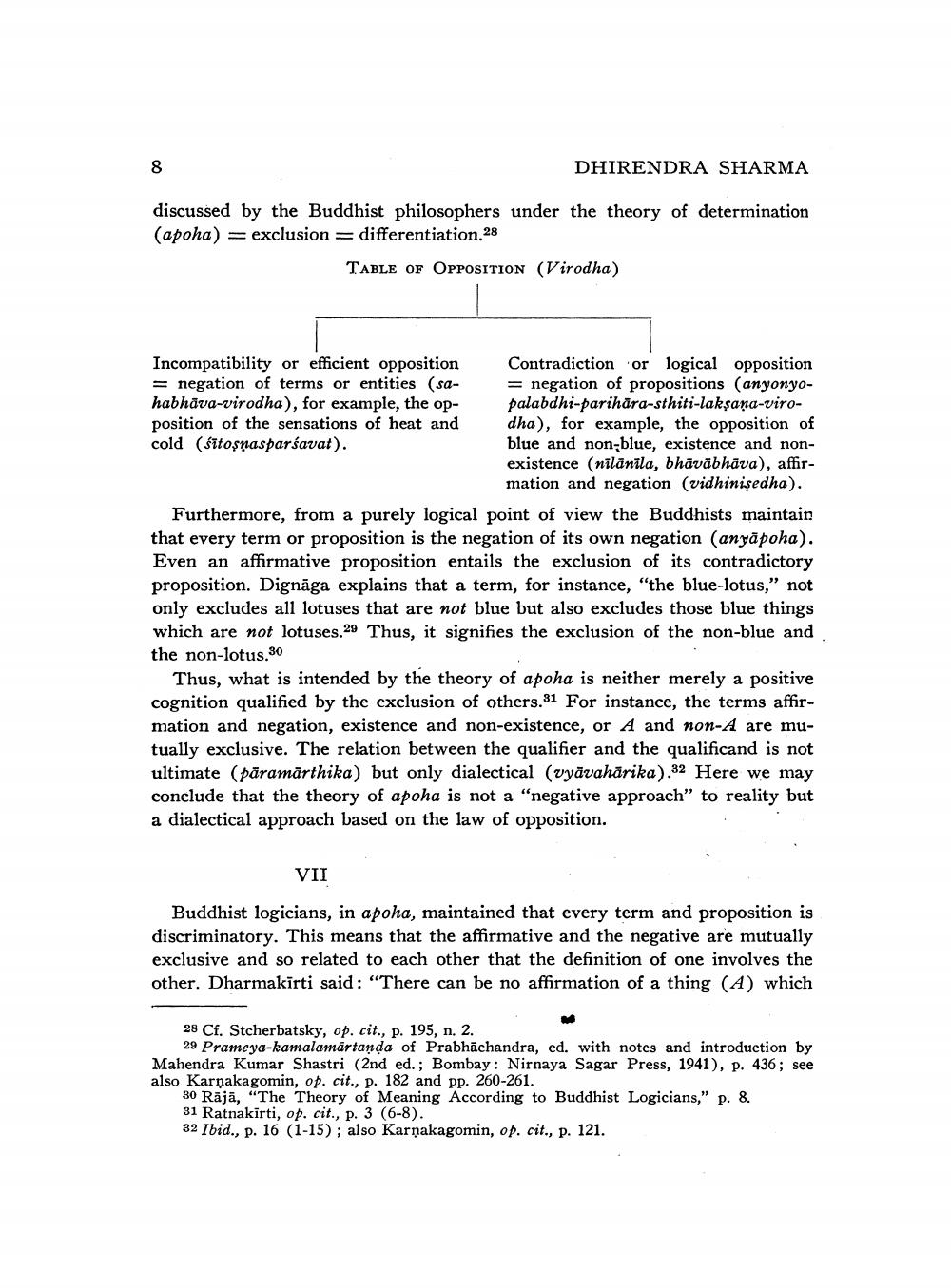________________
DHIRENDRA SHARMA
discussed by the Buddhist philosophers under the theory of determination (apoha) = exclusion = differentiation.28
TABLE OF OPPOSITION (Virodha)
Incompatibility or efficient opposition Contradiction or logical opposition = negation of terms or entities (sa- = negation of propositions (anyonyohabhāva-virodha), for example, the op- palabdhi-parihāra-sthiti-laksana-viroposition of the sensations of heat and dha), for example, the opposition of cold (śītoşnasparśavat).
blue and non-blue, existence and nonexistence (nilānila, bhāvābhāva), affir
mation and negation (vidhinisedha). Furthermore, from a purely logical point of view the Buddhists maintain that every term or proposition is the negation of its own negation (anyāpoha). Even an affirmative proposition entails the exclusion of its contradictory proposition. Dignāga explains that a term, for instance, "the blue-lotus," not only excludes all lotuses that are not blue but also excludes those blue things which are not lotuses.29 Thus, it signifies the exclusion of the non-blue and the non-lotus.30
Thus, what is intended by the theory of apoha is neither merely a positive cognition qualified by the exclusion of others.31 For instance, the terms affirmation and negation, existence and non-existence, or A and non-A are mutually exclusive. The relation between the qualifier and the qualificand is not ultimate (pāramārthika) but only dialectical (vyāvahărika).32 Here we may conclude that the theory of apoha is not a "negative approach" to reality but a dialectical approach based on the law of opposition.
VII
Buddhist logicians, in apoha, maintained that every term and proposition is discriminatory. This means that the affirmative and the negative are mutually exclusive and so related to each other that the definition of one involves the other. Dharmakīrti said: "There can be no affirmation of a thing (A) which
28 Cf. Stcherbatsky, op. cit., p. 195, n. 2.
29 Prame ya-kamalamartanda of Prabhāchandra, ed. with notes and introduction by Mahendra Kumar Shastri (2nd ed.; Bombay: Nirnaya Sagar Press, 1941), p. 436; see also Karņakagomin, op. cit., p. 182 and pp. 260-261.
30 Rājā, "The Theory of Meaning According to Buddhist Logicians," p. 8. 31 Ratnakirti, op. cit., p. 3 (6-8). 32 Ibid., p. 16 (1-15); also Karnakagomin, op. cit., p. 121.




